Guitar World Verdict
The Fender Lead III has a little Strat DNA, but with its more compact body and clever switching options, it's a formidable and playable tone machine in its own right.
Pros
- +
Excellent C-profile neck.
- +
Coil-split features makes for wide tone range.
- +
Build is exceptional.
- +
That finish is a thing of beauty.
Cons
- -
Volume drops off a little in coil-split modes.
You can trust Guitar World
Guitars are discontinued for all kinds of reasons – some simply don’t connect with enough players and for others it just isn’t their time...
Reissues can give lost gems a second life - a chance to find the fanbase that eluded them first time around. Which brings us here for the encore of the Fender Lead. It wasn’t exactly a flash in the pan design originally, though.
Produced between 1979 and 1982, the Lead eventually encompassed three guises in its original lifetime; the single humbucker Lead I with series/parallel switch, the Lead II with two single-coils and a phase switch and finally, the double humbucker Lead III that surfaced in 1982 with coil selector switch.
Bono picked up a Lead II in U2’s earlier days; Clapton’s is sitting in London’s Hard Rock Cafe. Even St Vincent has a heavily modded model. Even so, the Lead is not exactly a ubiquitous cult model. Switching configurations aside, it’s tempting to dismiss the Lead as a budget Strat alternative that gave way to the advent of the Japanese Squier series in 1982.
Bono picked up a Lead II in U2’s earlier days; Clapton’s is sitting in London’s Hard Rock Cafe. Even St Vincent has a heavily-modded model.
But spending time with one reveals a distinct shape that holds its own. It is a Strat alternative that players might actually prefer.
The Lead II and III are returning but the I has been left out of the reunion. While not being badged as a strict ‘reissue’, the two Leads for 2020 do stay authentic to some degree. They’re now part of Fender’s ever-growing Mexican series pickups and tuners, plus the modern C neck profile.
The Lead III potentially offers the widest tonal options of the two new models, and whadoyaknow, that’s what we have here, in the Purple Metallic finish Fender is the keenest to showcase of the selection.
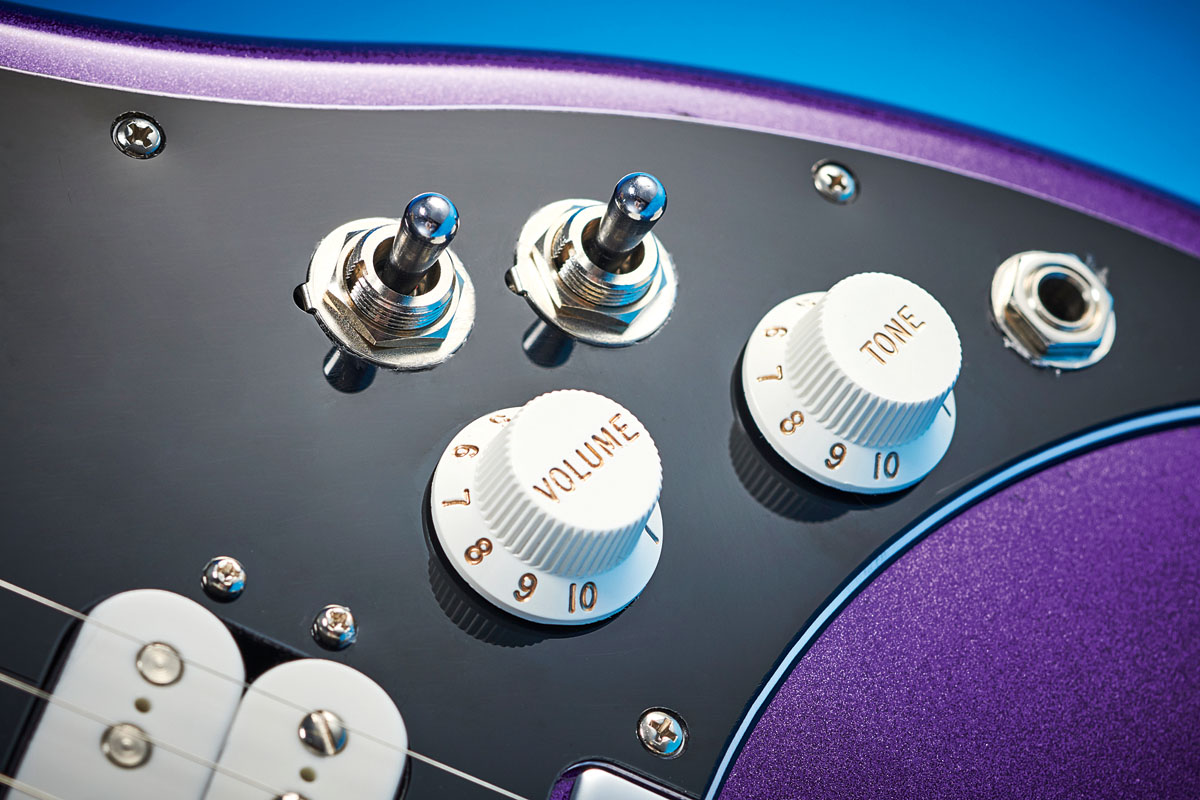
The volume and tone are self-explanatory, but the Lead III also features a three-way pickup selector and a three-way coil-split switch to select between a humbucker coil-split when bridge or both pickups engaged, standard humbucker mode, and humbucker coil-split when the neck humbucker is engaged.
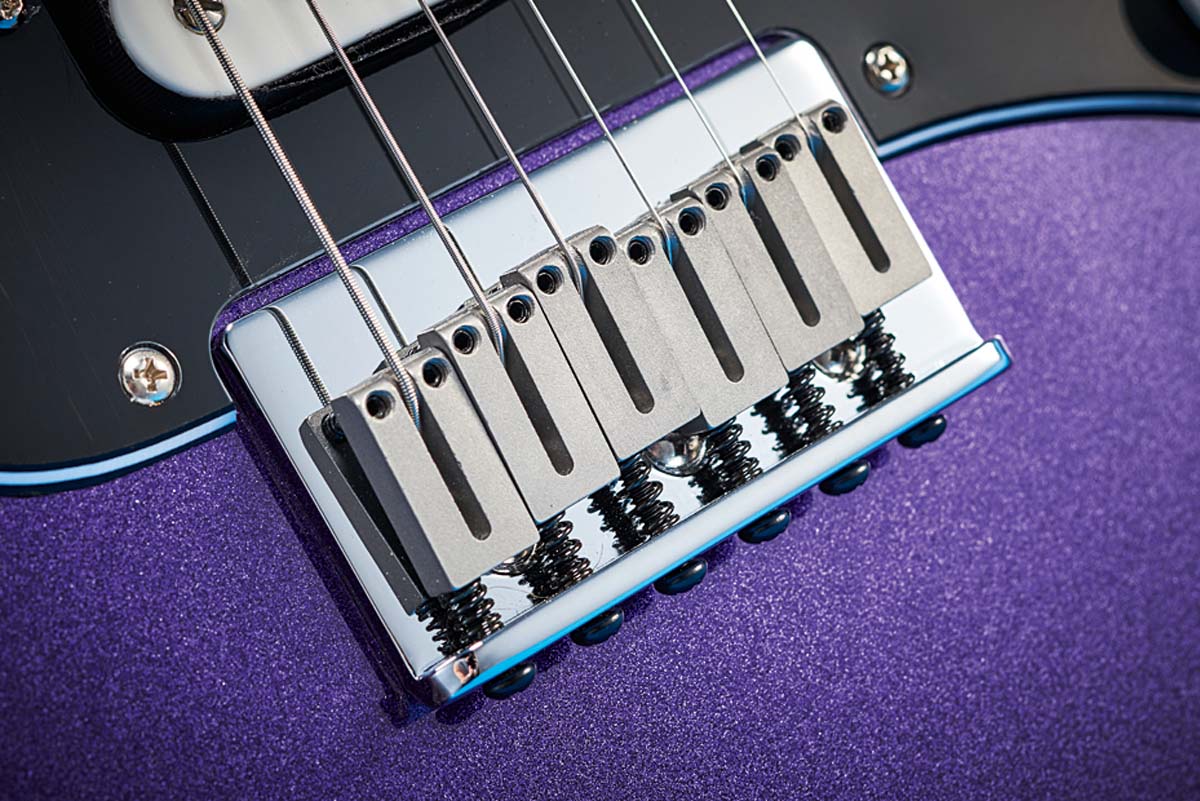
The six-saddle, string-through-body hard-tail bridge is a tidy piece of hardware.
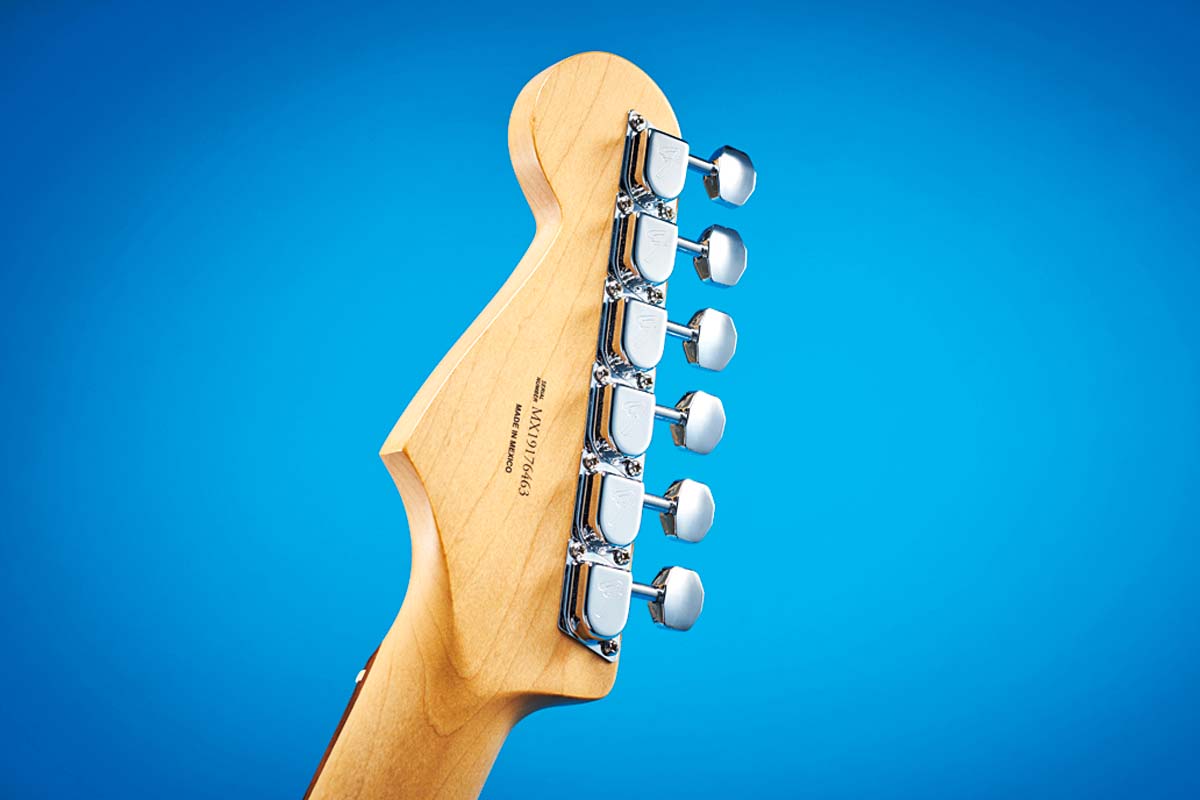
The Lead III is kitted out with '70s vintage-style machine heads with F stamp tuners.
The 25.5-inch scale may be the same as a Strat but the narrower, more double-cut body makes the Lead III look and feel more compact. According to your own preferences, that could win you round if you’ve never taken to Leo’s original or immediately turn you off. But make no mistake, it's distinct in the Fender catalogue.
We like it a lot and the guitar feels close and personal sitting down, with a balance on the strap, too. We like that metallic finish; it’s certainly won a fair few fans in the TG office and works very well with the black/white-edged pickguard.
Though CITES changes suggest rosewood will be working its way to more models this year, the Player series is sticking with pau ferro for now. It’s undeniably a lighter alternative, but there’s not much in it in terms of feel.
This is an interesting mix of the distinct with Strat traits
This is one of the most playable examples of the modern C neck we’ve encountered – the action is low and fast. People talk about the speed of flat profiles from the likes of Ibanez, but a well-set-up Fender C is an addictive thing indeed.
John Mayer claims the slack in the strings is the key to a great guitar, and there’s a sense of easier wins for your bends and vibrato offered with the elasticity here that we love. The large heel block is definitely from the older school, but the acoustic experience here bodes well for plugging in.
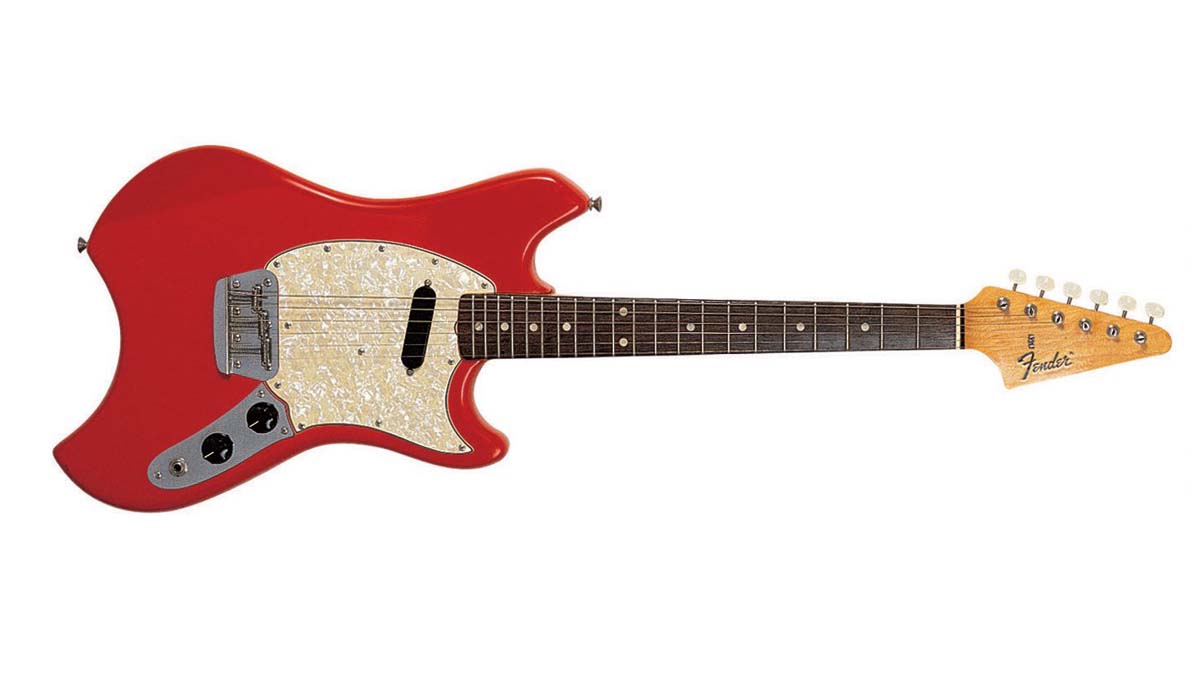
Fender has some weird and wonderful models away from the accepted classics. The late 60s single pickup Swinger [an original pictured above] being the most recent revival with a Japanese-only reissue.
Before that, the wonderfully odd offset Meteora got a second chance with a 2018 Parallel Universe model followed by last year’s more affordable HH model.
The semi-hollow Starcaster revival is now on a victory lap – the recent Squier models were reviewed in TG327. Even the V-shape-gone-awry mid-80s Katana got a Prestige model in 2016. But there’s plenty more Fender gold to be mined in them hills – the Performer must be due a reappraisal soon!
The thin alder bodies of Fenders with this scale length are typically bright sounding guitars and that in turn leads to a lively tonality when humbuckers are brought into play. That’s here in spades from these Alnico IIs– a crisper crunch along with some welcome versatility.
A caveat worth remembering is that despite the ‘best of both worlds’ concept, coil-splits aren’t the same as the full-fat single-coil experience. The level drops a little when you split here, but so does the bottom end.
What you gain is three more single-coil-esque flavours – we especially like the mid position split here, a great balance of throaty punch that recalls the middle territory of a Strat that’s also great for strumming with the volume wound down a notch.
This is an interesting mix of the distinct with Strat traits; the familiar and the fresh all from an unlikely comeback. The Lead III really must be tried out to see what it off ers in feel and tone, but we think it feels good and plays great. Rather than badge this as worthy addition to a guitar arsenal, we think it holds its own as a potential main squeeze to cover your needs.
Specs

- PRICE: $599.99 / £599
- BODY: Alder
- NECK: Maple
- SCALE: 648mm (25.5”)
- FINGERBOARD: Pau ferro fingerboard, Modern ‘C’ shape profile
- FRETS: 22
- PICKUPS: Alnico II humbucking
- CONTROLS: Pickup Switching: 3-Position Toggle: Position 1. Bridge Pickup, Position 2. Bridge and Neck Pickups, Position 3. Neck Pickup
- COIL-SPLIT SWITCHING: 1. Humbucker coil-split when bridge or middle pickup engaged 2. Standard humbucker mode 3. Humbucker coil-split when neck pickup engaged
- HARDWARE: Six-saddle string-through-body hardtail with block saddles, 70s vintage style machine heads with F stamp tuners
- FINISHES: Sienna Sunburst, Olympic White, Metallic Purple (as reviewed)
- CONTACT: Fender
Also try...
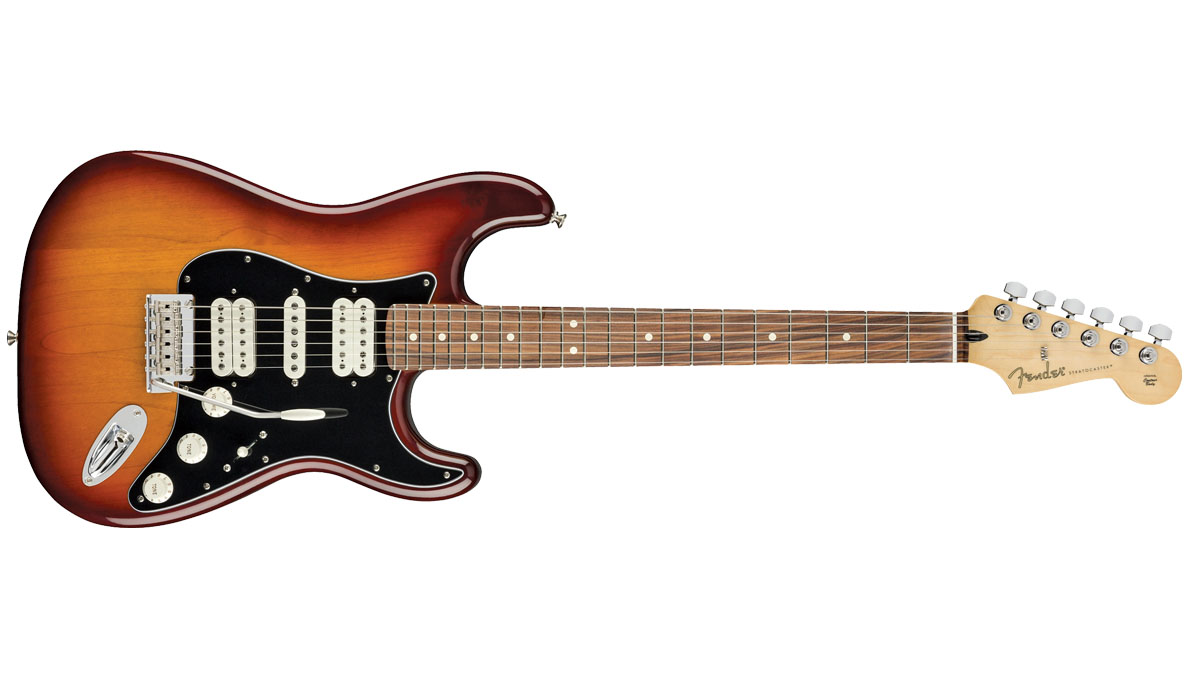
Fender Player Stratocaster HSH – $699.99 / £609
If it really must be a Strat, why not throw another pickup (an alnico 5 single-coil) and a two-point trem into the mix?
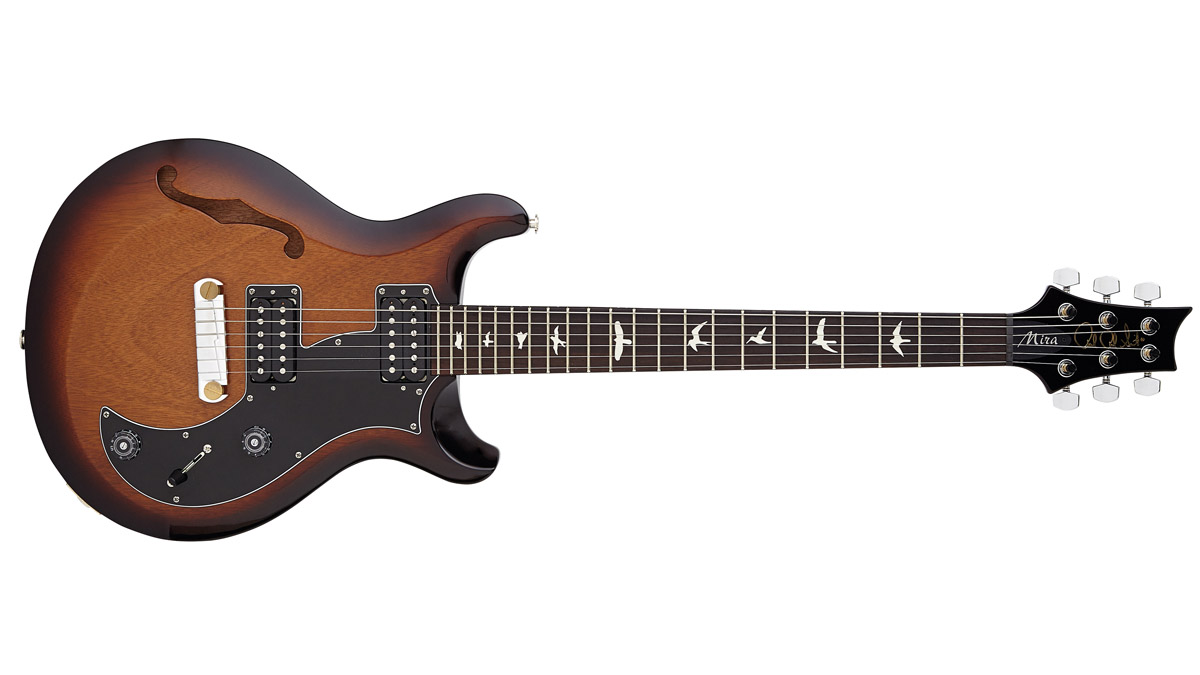
PRS SE Mira – $699 / £599
With a coil-split on the 85/15 ’buckers, this is a close rival for price too, so it all comes down to whether you like the PRS Wide Thin neck profile.
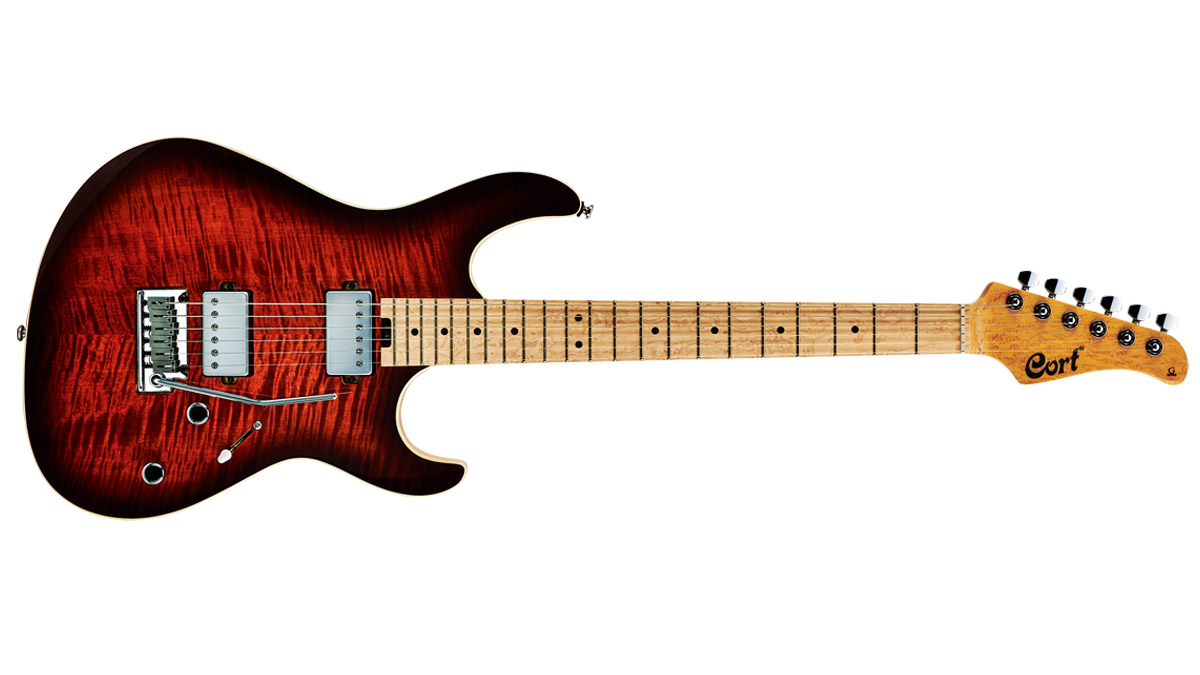
Cort G290 FAT – $564 / £549
If we’re talking versatility, it’s hard to ignore our guitar of 2019 – classy build with five positions including coil-splits and some wonderful tones.

Rob has 20 years of experience writing, reviewing and editing for guitar magazines and websites, including Guitarist and Total Guitar. He's now the Reviews Editor for GuitarWorld.com and MusicRadar guitars, heading up our in-house reviews team to give you in-depth and honest tests of the latest guitar gear. He eats and dreams reviews.
“What blew me away was that everyone wanted the curly maple top. People were calling, saying, ‘I’ve got to have the bird inlays’”: Paul Reed Smith on raising the Standard 24, finally cracking the noise-free guitar and why John Sykes is a tone hero
“It combines unique aesthetics with modern playability and impressive tone, creating a Firebird unlike any I’ve had the pleasure of playing before”: Gibson Firebird Platypus review











